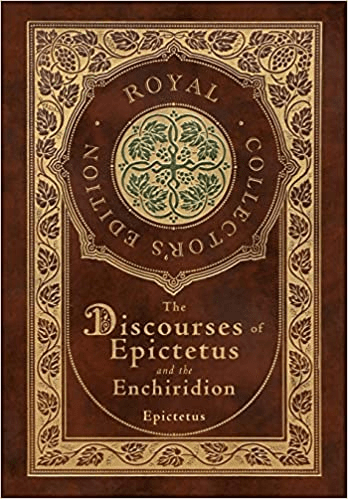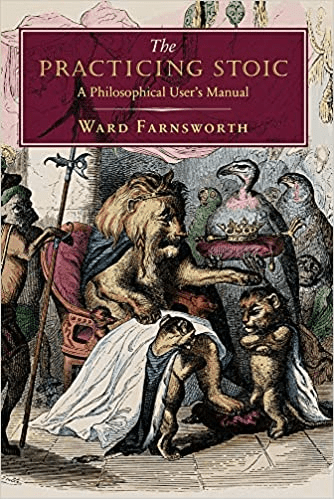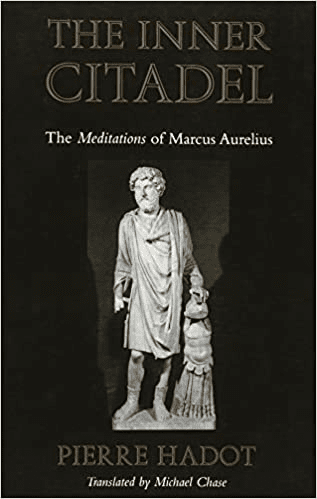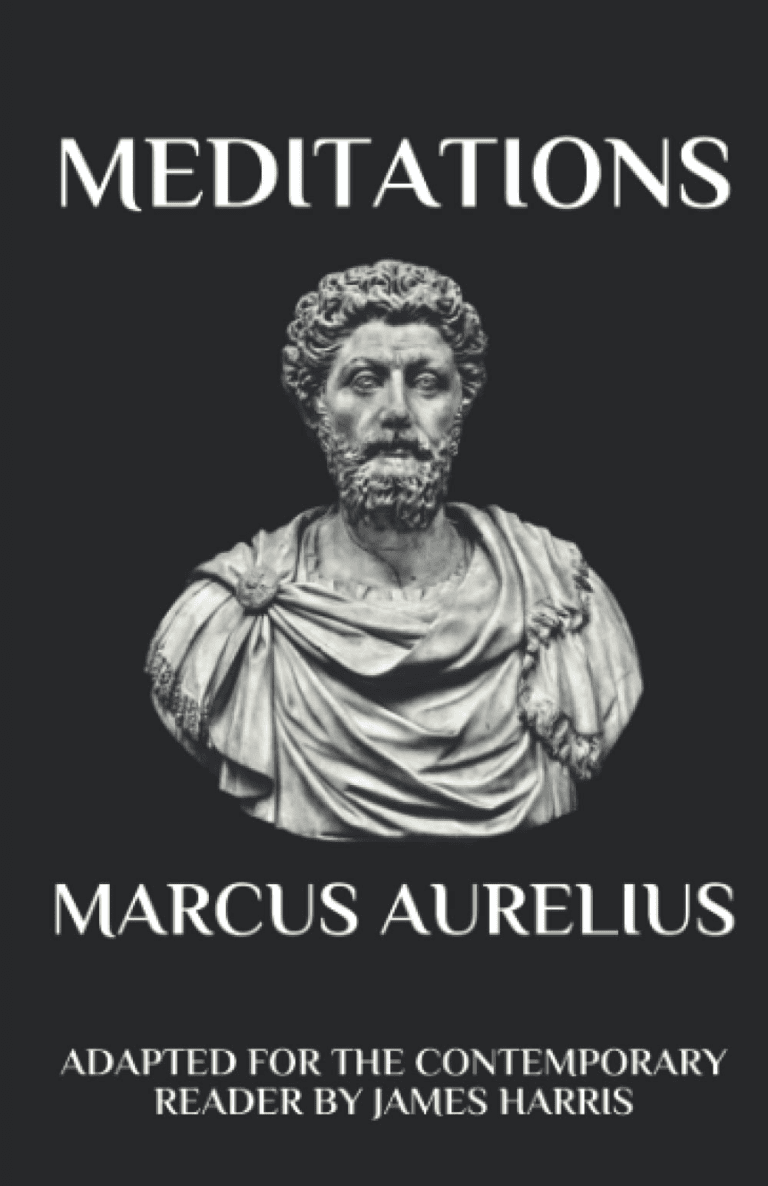
Stoicism is a philosophy that originated in ancient Greece and was practiced by philosophers such as Marcus Aurelius, Seneca, and Epictetus.
It is a philosophy concerning personal ethics that emphasizes the discipline of one’s emotions and the acceptance of one’s circumstances.
Often touted as a self-improvement philosophy for modern life by many, there are lots of reasons why one would benefit from studying and practicing stoic philosophy, especially those who are encountering trying times.
Stoicism is a practical philosophy with utility that has outlived the ancient world it was conceived in.
If you’re interested in learning more about this ancient philosophy, there are many books available that can help you understand and apply its principles in your own life.
Some of the best books on stoicism aren’t even the primary source material from the early stoics of the Roman empire. Many are modern interpretations and criticisms of stoic philosophy and the ways it can be incorporated into modern lives.
In no particular order, here are some of the best books on Stoicism:
“Meditations” by Marcus Aurelius

This is perhaps the most well-known book on Stoicism and is regarded as a philosophical classic.
Marcus Aurelius, the Roman Emperor, and Stoic philosopher wrote a series of personal writings in which he reflected on his own personal philosophy and the Stoic way of life.
One of the central themes of “Meditations” is the significance of living according to reason and virtue.
Marcus Aurelius emphasizes the importance of cultivating inner peace and overcoming negative emotions like anger, fear, and envy.
He also advocates for living a simple, humble life and performing one’s duties with integrity and compassion.
The ideas presented in this book have had a lasting influence on Western philosophy and continue to be widely studied and debated by philosophers today.
The book has also been widely read and admired by general audiences and is considered a classic of philosophy.
Many people find the book to be a source of inspiration and guidance for living a good life, especially in modern life.
“Letters from a Stoic” by Seneca

This book is a collection of letters written by the Stoic philosopher Seneca to his friends and students and is regarded by many to be the work his stoic wisdom shines brightest in
The letters cover a wide range of topics including ethics, psychology, and politics, and offer practical advice on how to live a good life in accordance with Stoic principles.
Marcus Aurelius and Seneca both belonged to the school of stoic philosophy, however, there are some differences in the specific ideas and teachings of Seneca and Marcus Aurelius.
On one hand, Seneca tended to emphasize the role of reason and self-discipline in living a good life. On the other, Marcus Aurelius placed more emphasis on the importance of living in accordance with nature and accepting whatever comes your way with equanimity.
Additionally, Seneca was more of a practical philosopher, offering advice on how to live a good life in the here and now. At the same time, Marcus Aurelius was more focused on the bigger picture and the importance of living a life that was in line with the universe’s greater plan.
“The Discourses” by Epictetus

The “Discourses” by Epictetus is a collection of philosophical lectures or teachings that were recorded by one of Epictetus’ students, Arrian.
The “Discourses” are a primary source of information about the philosophy of Epictetus, who was a famous Stoic philosopher.
One thing that sets the “Discourses” apart from other books about Stoicism is the fact that they are a record of actual lectures given by a philosopher rather than a treatise written by the philosopher himself.
This gives the “Discourses” a unique flavor and style, as they contain not only the philosophical ideas of Epictetus but also his manner of teaching and his responses to specific questions and objections from his students.
In terms of content, the “Discourses” cover many of the same themes and ideas as other works of Stoic philosophy. Some of these include the importance of reason, the need to cultivate virtues, and the idea that we should focus on what we can control and let go of what we can’t control.
However, Epictetus’ style of writing and teaching is distinctive, and his approach to these ideas may differ somewhat from that of other Stoic philosophers.
“The Art of Living” by Epictetus

The “Art of Living” by Epictetus is a book that is based on the teachings of the Stoic philosopher Epictetus, but it was not written by Epictetus himself.
Instead, it is a modern interpretation and presentation of Epictetus’ philosophy by the author, Sharon Lebell.
Because the “Art of Living” is a modern interpretation of Epictetus’ philosophy rather than a direct record of his teachings, it may differ somewhat in its approach and presentation.
However, both the “Art of Living” and the “Discourses” cover many of the same themes and ideas that are central to Stoic philosophy. These include the importance of reason, the need to cultivate virtues, and the idea that we should focus on what we can control and let go of what we can’t control.
It offers practical guidance on how to live a good life in accordance with Stoic principles, and includes exercises and meditations to help you apply these principles in your own life.
“The Consolation of Philosophy” by Boethius

The “Consolation of Philosophy” is a philosophical treatise written by the Roman philosopher Boethius in the 6th century as he was imprisoned and awaiting execution.
It is a unique work that blends elements of Stoic, Christian, and Neoplatonist philosophy, and it is notable for its deeply personal and introspective tone.
One thing that sets the “Consolation of Philosophy” apart from other books about Stoicism is the fact that it was written by a philosopher who was not himself a Stoic.
Boethius was well-versed in Stoic philosophy and drew heavily on Stoic ideas in the “Consolation,” but he was also influenced by other philosophical traditions and incorporated elements of these traditions into his work.
Another thing that makes the “Consolation” distinctive is its focus on the personal, emotional, and psychological dimensions of philosophy.
The work is structured as a conversation between Boethius and the personified figure of Philosophy, and it is written in a style that is deeply moving and evocative.
The “Consolation” is less a dry treatise on philosophical ideas and more a reflection on the human condition and the ways in which philosophy can bring comfort and solace in times of suffering.
The book is notable for its defense of the Stoic philosophy and its emphasis on the importance of living in accordance with reason.
“A Guide to the Good Life: The Ancient Art of Stoic Joy” by William B. Irvine

This book is a modern introduction to Stoicism, written by the philosopher William B. Irvine.
Irvine explains the basic principles of Stoicism in the book, including the concept of accepting the present moment and the idea that external events are beyond our control.
He then goes on to demonstrate how these concepts can be applied to help us live more fulfilling lives.
He illustrates Stoic techniques and practices and encourages readers to try them out to see what works best for them.
One aspect that distinguishes the book is the author’s approach to demonstrating the relevance of ancient philosophy to the life of the 21st century reader.
He also draws on contemporary sources to make the book more accessible and relatable to modern readers.
Many readers have found the book to be a valuable introduction to Stoicism, and it is widely regarded as one of the best.
It provides a clear and concise overview of the main principles of Stoicism and offers practical guidance on how to apply these principles in your own life.
“The Practicing Stoic: A Philosophical User’s Manual” by Ward Farnsworth

Ward Farnsworth’s book “The Practicing Stoic: A Philosophical User’s Manual” explores the Stoic philosophy and offers advice on how to incorporate its principles into one’s daily life.
Farnsworth presents the Stoic philosophy in a clear and concise manner in the book, explaining key concepts and how they can be applied to modern life.
He talks about things like understanding the nature of things, finding inner peace, and living a virtuous life.
He also includes exercises and examples for readers to use in applying Stoic principles to their own lives.
Ward Farnsworth, the author, is a philosopher who offers his personal perspective on ancient stoicism and how it can be applied in everyday life.
His writing is clear and approachable, making the book an excellent choice for readers new to philosophy.
It is also a good choice for those who are already familiar with Stoicism but want to know how to apply its principles in their daily lives.
Some readers complain that the book is too repetitious, and that the author could have gone more in-depth with some of the exercises and examples he provides.
Many people, however, have found it to be a valuable resource for better understanding Stoicism and applying its principles to their own lives.
“The Stoics” by F.H. Sandbach

This book is a comprehensive introduction to the Stoic philosophers and their timeless wisdom.
A thorough examination of Stoicism can be found in F.H. Sandbach’s book “The Stoics.”
It includes the fundamental ideas and teachings of stoicism in addition to its growth and history.
The study is regarded as a classic and a ground-breaking contribution to the field of Stoic studies.
It serves as a reference at numerous institutions and universities.
It thoroughly covers the major ideas and figures of Stoicism, and offers a detailed analysis of the Stoic way of life.
“The Inner Citadel: The Meditations of Marcus Aurelius” by Pierre Hadot

The Meditations are a collection of private writings by the Roman Emperor and Stoic philosopher Marcus Aurelius.
Pierre Hadot’s book The Inner Citadel: The Meditations of Marcus Aurelius offers a thorough analysis of the Meditations.
The book’s emphasis on the spiritual side of stoicism is one of its standout elements; Hadot contends that Aurelius’s work should not only be viewed as a philosophical treatise but also as a type of spiritual training.
He claims that Marcus Aurelius composed the Meditations to support him in keeping his virtue and composure in the face of the numerous demands and obligations of managing the Roman Empire.
It offers a detailed analysis of Aurelius’s personal philosophy and the Stoic way of life, and includes exercises and meditations to help you apply these.
“The Daily Stoic: 366 Meditations on Wisdom, Perseverance, and the Art of Living” by Ryan Holiday and Stephen Hanselman

This book is a modern interpretation of this ancient philosophy, written by the authors Ryan Holiday and Stephen Hanselman.
A reading is provided for every day of the year in Ryan Holiday’s book The Daily Stoic, which is distinctive in that it provides Stoic philosophy in a daily style.
Each reading contains both a passage from an ancient stoic, as well as an explanation or commentary on the passage’s applicability in contemporary life.
The book’s emphasis on the practical application of Stoic philosophy in everyday life is one of its standout elements.
It emphasizes the value of accepting what we cannot change, living in the present, and utilizing challenging circumstances as chances for personal development.
It includes a daily meditation for every day of the year, drawing on the wisdom of the Stoic philosophers to offer guidance and inspiration for living a good life.
The Daily Stoic is different from other works in that it is also easily accessible.
Regardless of the reader’s existing philosophical understanding, it is accessible to a wide range of readers since it conveys complicated ideas in a straightforward and understandable fashion.
The daily structure also imparts a sense of habit and practice, which serves to recall readers and encourage constant application of these ideas in everyday life.
Do you think these are the best books on stoicism?
This concludes my top 10 picks for the best books on stoicism. If you have a differing opinion, tell me which books I should’ve put on here in the comment section below!


